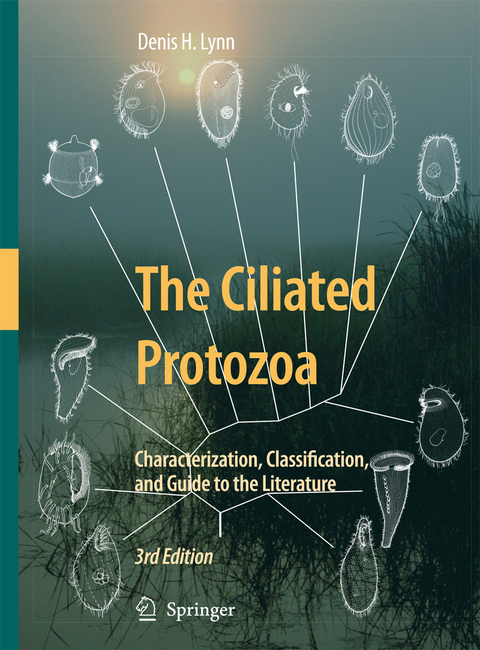
The Ciliated Protozoa
Springer (Verlag)
978-94-017-7692-9 (ISBN)
Dr. Denis H. Lynn received his graduate training at the University of Toronto where he received his Ph.D. Protozoology in 1975. His early research on the comparative ultrastructure of ciliates was published in Biological Reviews and lead to a revised classification of the Phylum Ciliophora, which was published in 1981 in collaboration with Eugene B. Small. Dr. Lynn has published extensively on ciliates, authoring more than a dozen book chapters and almost 120 refereed publications. He is currently a full professor in the Department of Integrative Biology, University of Guelph, and Editor in Chief of The Journal of Eukaryotic Microbiology.
and Progress in the Last Half Century.- Glossary of Terms and Concepts Useful in Ciliate Systematics.- Characters and the Rationale Behind the New Classification.- Phylum CILIOPHORA – Conjugating, Ciliated Protists with Nuclear Dualism.- Subphylum 1. POSTCILIODESMATOPHORA: Class 1. KARYORELICTEA – The “Dawn” or Eociliates.- Subphylum 1. POSTCILIODESMATOPHORA: Class 2. HETEROTRICHEA – Once Close to the Top.- Subphylum 2. INTRAMACRONUCLEATA: Class 1. SPIROTRICHEA – Ubiquitous and Morphologically Complex.- Subphylum 2. INTRAMACRONUCLEATA: Class 2. ARMOPHOREA – Sapropelebionts that Once Were Heterotrichs.- Subphylum 2. INTRAMACRONUCLEATA: Class 3. LITOSTOMATEA – Simple Ciliates but Highly Derived.- Subphylum 2. INTRAMACRONUCLEATA: Class 4. PHYLLOPHARYNGEA — Diverse in Form, Related in Structure.- Subphylum 2. INTRAMACRONUCLEATA: Class 5. NASSOPHOREA — Diverse, Yet Still Possibly Pivotal.- Subphylum 2. INTRAMACRONUCLEATA: Class 6. COLPODEA — Somatically Conserved but Orally Diverse.- Subphylum 2. INTRAMACRONUCLEATA: Class 7. PROSTOMATEA — Once Considered Ancestral, Now Definitely Derived.- Subphylum 2. INTRAMACRONUCLEATA: Class 8. PLAGIOPYLEA — A True Riboclass of Uncommon Companions.- Subphylum 2. INTRAMACRONUCLEATA: Class 9. OLIGOHYMENOPHOREA — Once a Pivotal Group, Now a Terminal Radiation.- Deep Phylogeny, Gene Sequences, and Character State Evolution — Mapping the Course of Ciliate Evolution.- The Ciliate Taxa Including Families and Genera.
| Erscheinungsdatum | 23.09.2017 |
|---|---|
| Zusatzinfo | XXXIII, 605 p. |
| Verlagsort | Dordrecht |
| Sprache | englisch |
| Maße | 193 x 260 mm |
| Themenwelt | Naturwissenschaften ► Biologie ► Mikrobiologie / Immunologie |
| Naturwissenschaften ► Biologie ► Ökologie / Naturschutz | |
| Naturwissenschaften ► Biologie ► Zellbiologie | |
| Naturwissenschaften ► Biologie ► Zoologie | |
| Schlagworte | Ciliates • classification • Ecology • genes • microorganisms • Phylogeny • Protistology • Protozoa • Taxonomy |
| ISBN-10 | 94-017-7692-X / 940177692X |
| ISBN-13 | 978-94-017-7692-9 / 9789401776929 |
| Zustand | Neuware |
| Haben Sie eine Frage zum Produkt? |
aus dem Bereich


